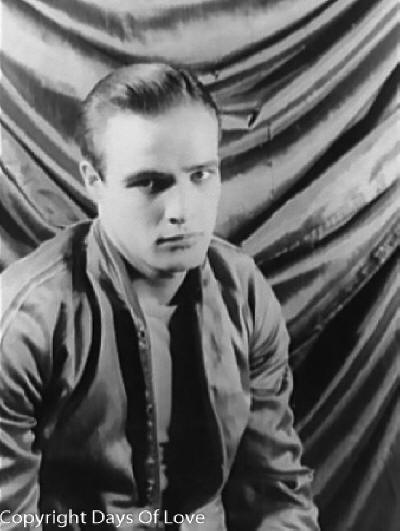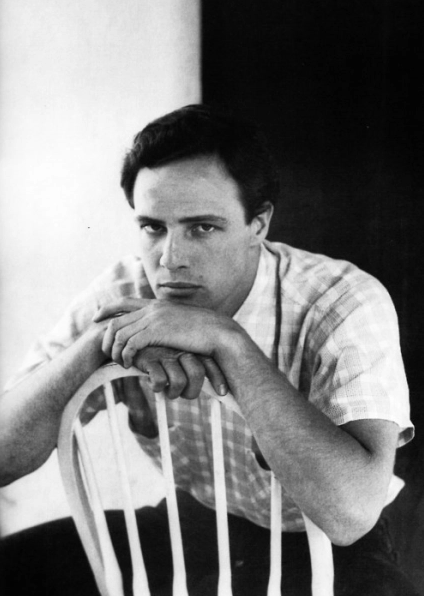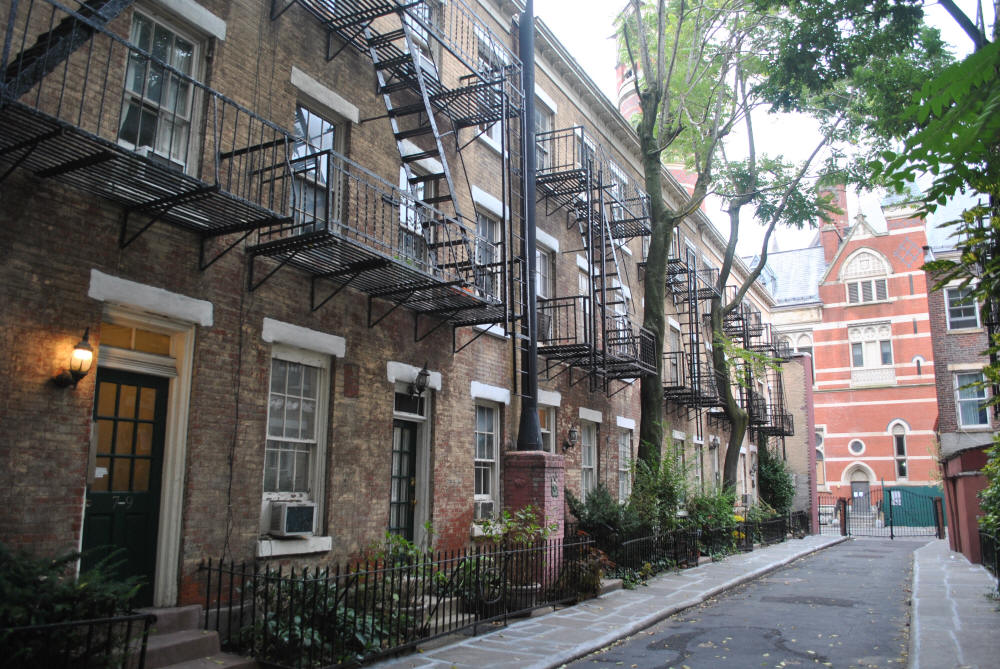

Friend Wally Cox, ashes scattered together
Queer Places:
Shattuck-St. Mary's School, 1000 Shumway Ave, Faribault, MN 55021, Stati Uniti
Patchin Place, Patchin Pl, New York, NY 10011, Stati Uniti
The New School, 72 5th Ave, New York, NY 10011, Stati Uniti
53 E 57th St, New York, NY 10022, Stati Uniti
43 5th Ave, New York, NY 10003, Stati Uniti
155 E 52nd St, New York, NY 10022
Actors Studios, 432 W 44th St, New York, NY 10036, Stati Uniti
The Savoy, Strand, London WC2R 0EU, Regno Unito
16 Quai d'Orléans, 75004 Paris, France
 Marlon Brando Jr. (April 3, 1924 – July 1, 2004) was an American actor,
film director, and activist. He is credited with bringing realism to film
acting, helping to popularize the Stanislavski system of acting, studying
with Stella Adler in the 1940s. Regarded for his cultural influence on
20th century film,[4]
Brando's Academy Award-winning performances include that of Terry Malloy
in On the Waterfront (1954) and Don Vito Corleone in The
Godfather (1972). Brando was an activist for many causes, notably the
civil rights movement and various Native American movements.
Marlon Brando Jr. (April 3, 1924 – July 1, 2004) was an American actor,
film director, and activist. He is credited with bringing realism to film
acting, helping to popularize the Stanislavski system of acting, studying
with Stella Adler in the 1940s. Regarded for his cultural influence on
20th century film,[4]
Brando's Academy Award-winning performances include that of Terry Malloy
in On the Waterfront (1954) and Don Vito Corleone in The
Godfather (1972). Brando was an activist for many causes, notably the
civil rights movement and various Native American movements.
Brando's close friendship with Wally Cox was the subject of rumors. Brando told a journalist: "If Wally had been a woman, I would have married him and we would have lived happily ever after."[84] Two of Cox's wives, however, dismissed the suggestion that the love was more than platonic.[85]
In 1949 Roger Vadim was living in Paris with his best friend, actor Christian Marquand. At the time Vadim had worked as a stage actor and journalist, but had not yet become a film director. The two were having lunch on the terrace of La Coupole, a former hangout of Hemingway and Henry Miller in Montparnasse. They noticed a startlingly handsome man seated alone at a nearby table, where he had removed his shoe to massage an aching foot. At the time Marlon Brando was having an affair with one of the waiters, Jacques Viale. Vadim and Marquand overheard Brando muttering in English and introduced themselves. They knew nothing of Brando’s recent success on Broadway, taking him for an out of work actor bumming around Paris. When Brando mentioned that he was suffering in an uncomfortable fleabag of a hotel, Vadim and Marquand invited Brando to come live with them, and all three became intimately acquainted. In fact the normally heterosexual Marquand soon became besotted with Brando. Christian Marquand became best known to English-speaking audiences in Lord Jim (1965) and Apocalypse Now (1979). Marlon introduced his new friends to his waiter friend, Jacques Viale, who joined their circle. Viale later said that his time with Brando and his friends was the greatest moment of his life. “It was all downhill after Brando.”

Marlon Brando by Jean Howard
The Actors Studio, NYC
TThe Savoy, London

Patchin Place
Marlon and Christian fell in love in the words of Roger: "It was an unconventional love affair that would span the decades, and fidelity to each other had nothing to do with it. I don't think I ever saw a more compatible couple. While Brigitte Bardot and I would be indulged in a terrible fight, Christian and Marlon would be in my bedroom making mad, passionate love, just like I did with Brigitte when she wasn't mad at me."
When Roger and Christian moved to larger quarters in Paris, they took in another actor, Daniel Gélin, to help with expenses. Even though Brando and Christian were immersed in a deeply sexual and emotional relationship, Brando set his sights on Gélin, as well. He was an easy, willing target. Ironically, Gélin later had an illegitimate daughter, actress Maria Schneider, best known for playing Marlon Brando’s young lover in Last Tango in Paris (1972). Schneider met her father only three times, so took her mother’s last name. Two years after Last Tango in Paris was released, she declared her bisexuality; Schneider died of cancer in Paris. Late in life Brando said, “I have truly loved only three men in my life: Wally Cox, Christian Marquand and Daniel Gélin. All others were merely ships passing in the night.”
Brando initially gained acclaim and an Academy Award nomination for reprising the role of Stanley Kowalski in the 1951 film adaptation of Tennessee Williams' play A Streetcar Named Desire, a role that he originated successfully on Broadway.[5] He received further praise for his performance as Terry Malloy in On the Waterfront, and his portrayal of the rebellious motorcycle gang leader Johnny Strabler in The Wild One proved to be a lasting image in popular culture.[6] Brando received Academy Award nominations for playing Emiliano Zapata in Viva Zapata!; Mark Antony in Joseph L. Mankiewicz's 1953 film adaptation of Shakespeare's Julius Caesar; and Air Force Major Lloyd Gruver in Sayonara (1957), an adaption of James Michener's 1954 novel. Brando was included in a list of Top Ten Money Making Stars three times in the 1950s, coming in at number 10 in 1954, number 6 in 1955, and number 4 in 1958.
The 1960s proved to be a fallow decade for Brando. He directed and starred in the cult western film One-Eyed Jacks, a critical and commercial flop, after which he delivered a series of box-office failures, beginning with the 1962 film adaptation of the novel Mutiny on the Bounty. After 10 years, during which he did not appear in a successful film, he won his second Academy Award for playing Vito Corleone in Francis Ford Coppola's The Godfather, a role critics consider among his greatest. The Godfather was then one of the most commercially successful films of all time. With that and his Oscar-nominated performance in Last Tango in Paris, Brando re-established himself in the ranks of top box-office stars, placing sixth and tenth in the Money Making Stars poll in 1972 and 1973, respectively. Brando took a four-year hiatus before appearing in The Missouri Breaks (1976). After this, he was content with being a highly paid character actor in cameo roles, such as in Superman (1978) and The Formula (1980), before taking a nine-year break from motion pictures. According to the Guinness Book of World Records, Brando was paid a record $3.7 million ($15 million in inflation-adjusted dollars) and 11.75% of the gross profits for 13 days' work on Superman. He finished out the 1970s with his controversial performance as Colonel Kurtz in another Coppola film, Apocalypse Now, a box-office hit for which he was highly paid and which helped finance his career layoff during the 1980s.
Brando was ranked by the American Film Institute as the fourth-greatest movie star among male movie stars whose screen debuts occurred in or before 1950. He was one of six professional actors, along with Charlie Chaplin, Ronald Reagan, Lucille Ball, Frank Sinatra, and Marilyn Monroe, named in 1999 by Time/i> magazine as one of its 100 Most Important People of the Century.[7] He died of respiratory failure on July 1, 2004, at age 80.
Brando was cremated, and his ashes were put in with those of his childhood friend, comedian and actor Wally Cox and another longtime friend, Sam Gilman.[72] They were then scattered partly in Tahiti and partly in Death Valley.[73] In 2007, a 165-minute biopic of Brando for Turner Classic Movies, Brando: The Documentary, produced by Mike Medavoy (the executor of Brando's will), was released.[74]
My published books: